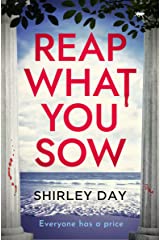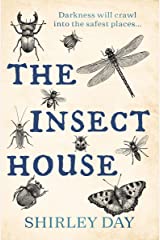It is very encouraging to know that Greene is still not only read by enthusiasts and newcomers alike, but also that there is enough new material in his writing to warrant serious academic research. The Graham Greene Birthplace Trust fully supports this – witness Lucas Townsend’s talk at the 2022 Festival on his PhD thesis on Greene and Ian Fleming. It is in this vein that we have asked Shirley Day, who is in the early stages of another Greene-related doctoral study, to outline her plans.
I currently teach at two universities in London. My subjects are screenwriting and theatre studies. Last September, with encouragement from Professor Richard Hand at UEA, I set out on my PhD – Graham Greene and Adaptation. Why choose Greene? I’m intending to take my time, six years, and figured Greene would be good company. Besides, Greene felt like a good fit. I also write between mediums: prose fiction, theatre and film. Working not only as a writer but as a producer, so I understand the process involved when transposing script to screen.
Greene provides an excellent go-to for adaptation. He was one of the first people writing for the cinematic medium, both as a reviewer and as a screenwriter. In an interesting twist, The Third Man was famously ‘reverse engineered,’ a film treatment (an outline or story for a film) blossoming into a novel.
The specific area of Greene’s work, which I intend to focus my research on, is film adaptation. Although a pragmatist about this process, Greene became frustrated with studio intervention, most notably when he adapted Galsworthy’s The First and The Last. A project which he described as his worst film, claiming ‘Laurence Olivier and Vivien Leigh … had much to forgive’ him for, as they ‘suffered together in the leading parts.’ (Ways of Escape).
There are many differences in the three forms of this particular story: Galsworthy’s original short story version, Greene’s script, and Korda’s final film. Some differences hardly matter. The differences I’m interested in are those that subvert the meaning: either dulling it or drawing it out. One key difference in the triangle of mediums used to frame The First and The Last (which was released under the title Twenty-One Days) is that Galsworthy’s short story is based on a moral dilemma which ends when two ill-fated lovers take their own lives. Korda’s final film is more procedural with a Pretty Woman type vibe. The lovers under this new schema cannot die. Yet, in his screenplay, Greene attempted to maintain the dose of morality Galsworthy invested in his original story. Greene does this by firing a gun; a gun aimed not at the lovers, but at Keith: a character who allowed an innocent man to be incarcerated for murder. Galsworthy’s suicide is there, but the body is different; the lovers are now free to fulfil their role in Korda’s cinematic genre piece. However, although Keith’s suicide appears in Greene’s final shooting script, Korda left the suicide on the cutting room floor. In the final film, no one commits suicide, resulting in a watering down of the ethical impact of this story. The gun that should have gone off in the film remains fired but unheard on page one hundred and forty-five of Greene’s final shooting script in the vaults at the BFI.
These kinds of tensions, where elements within a story have been changed, will be the focus of my PhD. A story is made up of a series of moving parts. Which parts need to remain in order for the story to be the same story? Is Korda’s final film, with its shift of PoV and failure to bring those who commit crimes to account, Galsworthy’s story?
Just as it’s interesting to look at differences between the three mediums – prose, script & screen version – I’m also interested in how certain characters or elements develop throughout Greene’s work, for example – what are the similarities and differences between two of Greene’s most dislikable young men: the self-centred Andrews in The Man Within and Pinkie Brown (who needs no introduction).
Using a narratological framework for comparison (perhaps something similar to that outlined by Seymour Chatman) coupled with re-reading the novels, watching the films and scouring through the scripts held at the BFI, will form the basis for my research. I’m also hoping to develop not only academic research but material in the practical field of adaptation. How do we move forward when adapting Greene’s work? How can texts of the past have relevance for audiences of today? As playwright Robert Ike so wonderfully expressed, adaptation is: “like using a foreign plug. You are in a country where your hairdryer won’t work when you put it straight in. You have to find the adaptor which will let the electricity of now flow into the old thing and make it function.” Greene himself was aware of this, as illustrated by his repositioning of the suicide in The First and the Last. Making that ‘electricity flow’ successfully is perhaps the key to unlocking the art of adaptation.
Shirley Day
[Two of my novels were published by Bloodhound Books this year and are available through Amazon: The Insect House and Reap What You Sow. Both have characters inspired by Greene’s work.]
